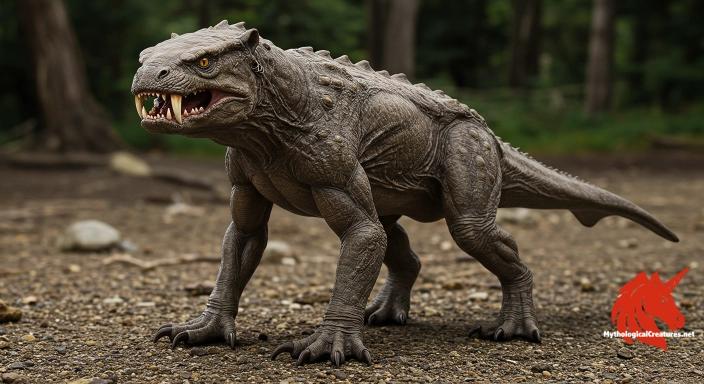Bistonis: Bistonis is a nymph from Greek mythology linked to Lake Bistonis in Thrace.

Bistonis
Bistonis - Bistonis is significant for her deep connection to Lake Bistonis in Thrace and for being the mother of Tereus, highlighting the interplay between nature and divine ancestry in Greek mythology.
Origins & First Encounters
Bistonis emerges from the folds of Greek mythology as a delicate yet significant nymph associated with the sacred waters of Thrace. Her origins, though not expansively chronicled, hint at an ancient connection between the divine and the natural world, where water and spirit coalesce. In early attestations, her name is intertwined with that of a lake and reflects the intimate bond between fertile landscapes and mythic presences. The narrative surrounding her, though scarce, speaks of a lineage that bridges the ethereal realm and mortal experiences, particularly through her union with the god of war who fathered Tereus. Her myth, while fragmentary, encapsulates the mystique of water, embodying both nurturing beauty and an undercurrent of divine austerity. The simplicity of her portrayal in early texts is counterbalanced by the depth of symbolism her association with nature conveys. The maternal aspect of her character is further amplified by the legacy of her offspring, whose mythic journey underscores the complex interplay of fertility and conflict. Many local traditions, though subtle in their details, continue to evoke her name as a guardian of water and a muse of natural allure.
Source Texts & Tale Variants
Ancient texts offer a mosaic of mentions and subtle hints about Bistonis, with poetic fragments from the 3rd century BCE forming a significant part of her legacy. One notable source is a poem by Moschus, where Lake Bistonis is poetically identified as her personal domain. These rare literary references suggest that Bistonis was well known in the regional lore of Thrace even if she appears only peripherally in major mythological narratives. Alongside poetic verses, scattered scholia and commentaries hint at further, albeit enigmatic, details about her life and divine purpose. Variants in the surviving texts indicate that her story was adaptable, merging with local mythic traditions and evolving with the changing cultural ethos. Some accounts present her not merely as a background figure, but as a vital conduit for the sanctity associated with water and its life-giving properties. The multiplicity of versions underscores the fluidity with which her myth was transmitted across generations. Overall, the literary remnants paint a picture of a nymph whose understated presence invites continual reinterpretation and scholarly curiosity.
Form & Powers
Bistonis is typically envisioned as an embodiment of ethereal beauty, reflecting the luminescence of the water she so closely inhabits. Her features are imagined to be delicately sculpted, with soft, flowing contours that mirror the gentle undulations of a twilight lake. In many artistic renditions, her hair is portrayed as cascading like liquid silver or golden threads, catching the light with an almost otherworldly sheen. The luminous quality of her skin is often likened to the reflective surface of water, suggesting both fragility and enduring grace. Classical illustrations sometimes depict her emerging serenely from a mist or the shimmer of a secluded lake, evoking a dreamlike quality. Her eyes, imbued with the depth of hidden springs, are said to hold a secret knowledge of nature’s mysteries. Artists and storytellers alike have imbued her figure with fluidity and harmony, lending her an appearance that is both transient and timeless. Despite the scarcity of detailed descriptions in primary sources, modern creative depictions consistently celebrate her as a symbol of nature’s exquisite, ephemeral beauty.
Regional Faces
Bistonis is most strongly associated with Thrace, where her influence is woven into the cultural and natural landscape. In this region, the lake that bears her name serves as a centrepiece for local myth and ritual, highlighting her role as a guardian of the natural world. Regional traditions often depict her in connection with the local geography, where the interplay between water and land is celebrated through communal lore and seasonal festivities. In some accounts, she is portrayed as an elemental spirit whose presence blesses the fertile plains and invigorates the local water sources. The evolution of her myth has seen her identity blend with regional water deities, creating a rich tapestry that reflects the diverse interpretations of nature worship. Local legends sometimes conflate her story with that of other minor nymphs, illustrating the adaptability of myth in expressing environmental reverence. The subtle transformation of her narrative over time underscores how communities have sought to enshrine a protective, almost mystical, relationship with their surroundings. Such regional variations not only enrich her myth but also reinforce her status as a symbol of the enduring connection between people and the natural world of Thrace.
Cultural Parallels
In a broader mythological context, Bistonis shares much in common with other water deities and nymphs in the Greek tradition, particularly the Naiads who preside over the freshwaters. Her character embodies a delicate balance between nurturing vitality and an enigmatic connection to martial lineage, setting her apart from the more universally benevolent water spirits. Like many minor deities, she serves as a localized symbol of nature’s eternal cycles, paralleling figures from other traditions who similarly guard bodies of water. The convergence of her myth with the narrative of heroic or semi-divine offspring is reminiscent of other maternal figures whose progeny inherit complex destinies marked by both grace and strife. Cross-cultural comparisons reveal that such water spirits often personify the life-giving and transformative energies of nature, a motif that recurs in various Mediterranean and Near Eastern mythologies. In this light, Bistonis can be seen as a conduit connecting the symbolisms of renewal, protection, and the unpredictable might of natural forces. The thematic emphasis on water as both a nurturing and cleansing element resonates across many cultures, fostering a shared mythic vocabulary. Ultimately, the examination of Bistonis alongside similar figures illuminates the rich interplay of regional attributes with universally recognised mythic archetypes, highlighting the versatility of water symbolism across diverse poetical traditions.
Legacy & Modern Evolution
The myth of Bistonis has undergone a significant transformation from its archaic, elusive roots to a modern emblem of local heritage and environmental reverence. Over the centuries, her once fragmentary narrative has been interwoven into the lore of Thrace, where ancient tales are cherished and celebrated. Modern interpretations often cast her as a guardian of nature, drawing upon her enigmatic legacy to evoke ideas of renewal and the delicate balance between civilization and the wild. While ancient texts afford only limited glimpses of her life, contemporary art, literature, and local festivals have revitalised her image with layers of symbolic meaning. Her narrative now frequently serves as a reminder of the ancient belief in the sacredness of natural features, such as lakes and groves, that continue to inspire regional identity. In cultural discussions, she is sometimes reimagined as an icon of ecological sustainability, with her story echoing the modern pursuit of environmental harmony. Scholars and enthusiasts have worked to reconstruct her mythological presence, often blending classical references with innovative artistic interpretation. The evolving legacy of Bistonis stands as a testament to the enduring power of myth, where even the most obscure figures can inspire contemplation on nature, heritage, and the timeless bond between the divine and the natural world.
Interesting Fact
An intriguing aspect of Bistonis's myth is her dual role as both a nurturing nature spirit and a progenitor linked to the warlike god Ares, exemplifying the complex interweaving of natural and divine elements in Greek lore.
Quick Creature Info
Origin:
Features:
Associations:
Our Mythic Legendary Rating:

Habitat:
Supernatural Powers:
Physical Attributes:
Abilities:
Behavior:
Lore:
References
Discover Another Mythical Legend You May Not Have Heard Of?
Uncover the mysteries of ancient folklore and expand your knowledge of legendary beings from cultures around the world.
Dare to Meet the Iemisch....
Curated by the Mythological Creatures Team (rev. May 2025)
